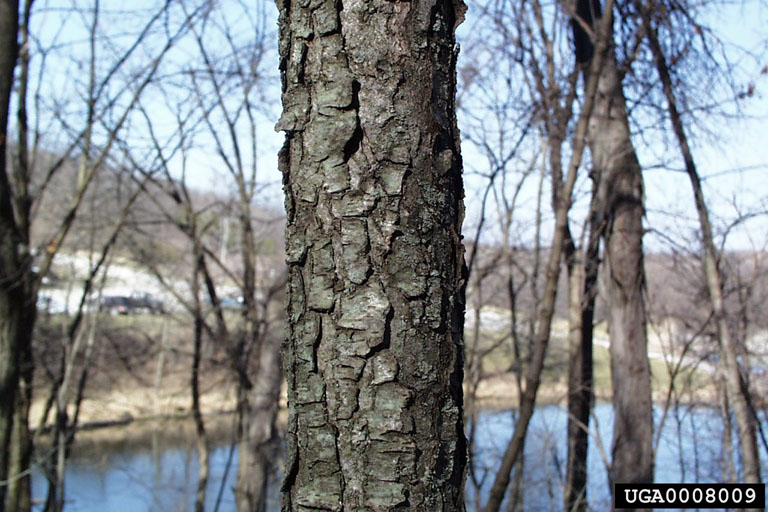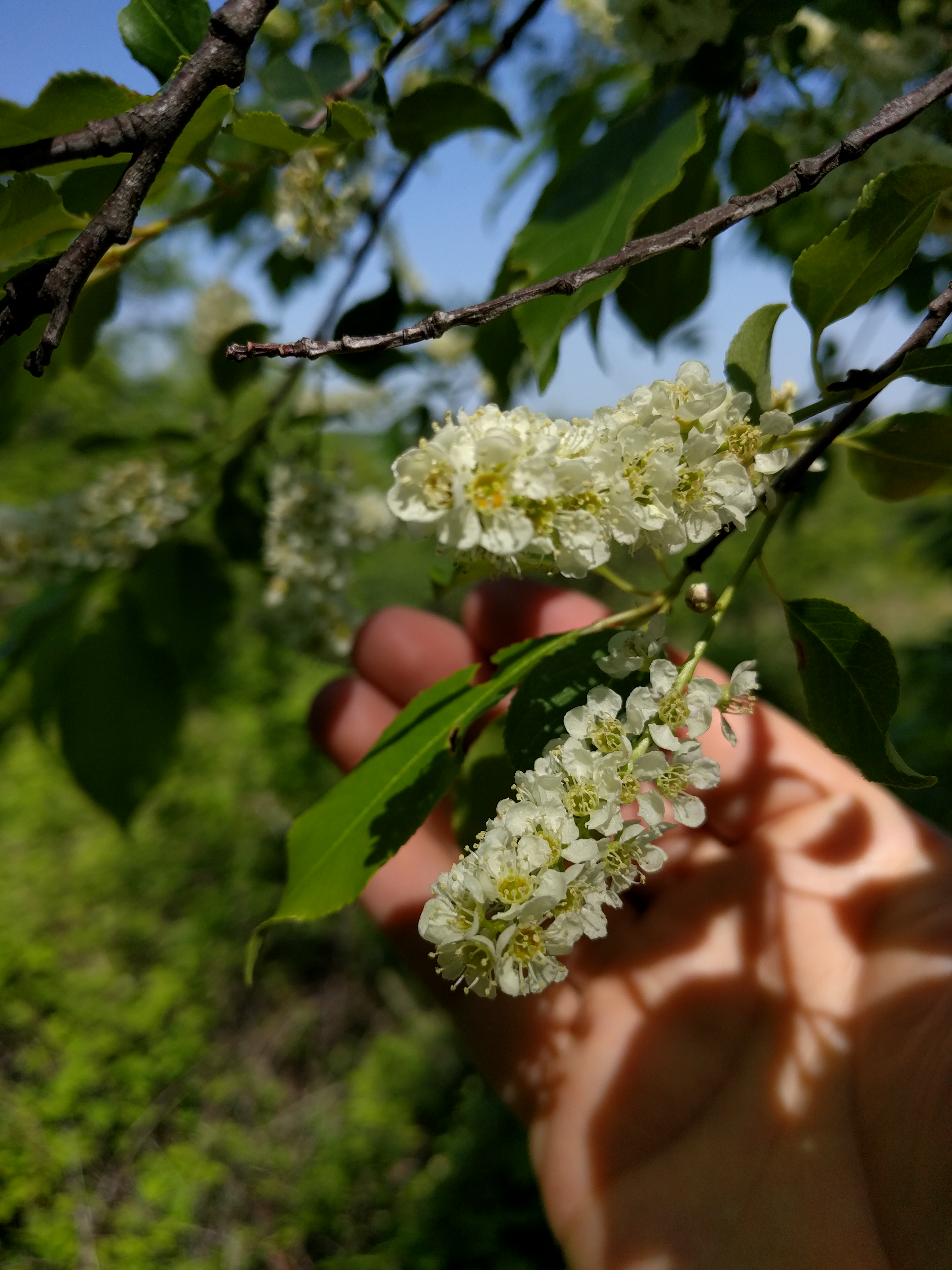Common Name: black cherry
Scientific Name:
Family: Rosaceae
Genus: Prunus
Species: serotina
Hardiness Zone: 3 to 9
Height: 50 to 80 ft
Width: 30 to 60 ft
Common Characteristics:
Black cherry is the largest native cherry in North America and was first recorded as early as 1629. In late spring, there is an abundance of small 5-petaled white flowers that eventually produce a small cherry that turns from a dark red to almost black. The fruit is edible but has a bitter taste. The leaves are elliptical in shape with finely serrated edges. They are a shiny dark green above and light green with a hairy midvein underneath. The leaves turn to a brilliant yellow or red color in the fall. The bark on young trees is smooth and dark gray. As the trees mature, the bark becomes fissured and scaly, having the appearance of burnt potato chips. The bark scales expose a reddish-brown inner bark. Twigs on black cherry are slender, hairless, and red-brown. The bark, roots, and leaves contain concentrations of toxic cyanogenic compounds, making the inner bark have a noticeable bitter almond aroma.
Where it Grows:
Black cherry does best in moist, well-drained loam soils. It does not do well in very wet or very dry sites. Prefers full sun to part shade. Young trees grow a long taproot which makes it difficult to transplant.
How it's Used:
Black cherry can be used as an ornamental tree due to its showy fragrant flowers in the spring. Falling fruit can make it challenging for cleaning sidewalks in an urban environment. Its wood has a wide variety of uses from furniture to scientific instruments to toys. The cherry syrup can be obtained from the bark and used as a cough syrup. Jelly and sometimes wine can be made from the fruit. The fruit can also be used to flavor certain liquors such and brandy or whiskey.
Ecosystem Services:
Black cherry provides food and shelter to cavity-nesting birds, game birds, game mammals, insect pollinators, small mammals, and songbirds.
Where it is Native To:
The native range for black cherry is in the eastern United States, stopping at the eastern edge of the Rocky Mountains. There are also records of its native range growing in Mexico and Central America.
Problems:
Black cherry is highly susceptible to ice damage. Black knot is also a fungal disease that is common amongst the tree and can kill the tree if not properly managed with pruning. Eastern tent caterpillars can attack the tree and eventually cause death. Black cherry can be aggressive and become weedy without proper management.
References:
US Department of Agriculture NRCS
Little, E. L. (n.d.). National Audubon Society Field Guide to North American Trees; Eastern Edition. (Original work published 1980)

